To be honest, even some of the giant stars have endured at least one flop that ruined their career. To be a big shot in Hollywood is a do-or-die game, and fame changes into purgatory within no time. These are not flotsam notes, or tabloid trash scavengings. The movie industry is extremely fickle. Whether due to brutal reviews, box office tanking or public ridicule, a select few movies have gained infamous status not just over their shortcomings, but for the harm they caused to the actors.
From former child stars who were in the limelight but failed terribly to Academy Award-winning actors who tried to swing at something offbranded, here are 10 movies that killed an actor's career overnight.
Disclaimer: This article reflects the writer's opinion. Discretion is advised.
Alicia Silverstone in the movie: Batman and Robin
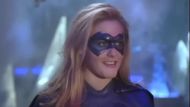
Alicia Silverstone became the '90s it girl, through her breakout as the effortlessly iconic Cher in Clueless. However, her subsequent massive jump into the superhero world as Batgirl in the 1997 movie, Batman & Robin, was a landmark alright, only this time in the wrong sense. With Joel Schumacher as director, the movie soon earned infamy with a campy attitude, bad special effects and unusual design elements. Its failure, unfortunately, stigmatized Silverstone with backlash, the critics attacked her stage performance vehemently and even went to the extent of criticizing her appearance, stoking the flames of hatred against the actress. The downside response affected the situation on a large scale.
A young star on the rise, Silverstone was now typecast in superficial roles with relentless media scrutiny. She was no longer offered the star roles, even her appearances in the small productions were held to a minimum; her Hollywood upward mobility was practically destroyed. Her career in a contemporary setting marks a sad chronicle about Hollywood, its impossible standards, particularly for the young women.
Halle Berry in the movie: Catwoman
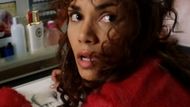
Halle Berry jumped courageously from her historic Oscar win in Monster Ball (2002) into the smooth rubber suit of Catwoman, and the changeover was intended to be loud. Rather, it became outrageous for her and her fans. Premiering in July 2004, the movie made only about 82 million against its 100 million budget, and was panned with only 9% on Rotten Tomatoes and a 27 score on Metacritic.
Even more than a failure, Catwoman turned out to be an example of an erroneous move in an actor's career. Berry made history when she proudly walked across the stage to accept her Razzie, holding the statuette in one hand and her Oscar in the other; her sarcastic, self-effacing speech still renowned: “Thank you for putting me in a piece-of-shit, god-awful movie. It was just what my career needed!” Catwoman did not destroy Halle Berry's career, but it certainly took her temporarily off the fast track of A-list Hollywood. It is an aberration in an otherwise robust career that played on and even gained new life many decades later.
Eddie Murphy in the movie: A Thousand Words

Eddie Murphy was a master of quick wit and comedic timing, and the speed of his mouth used to be his calling card. However, the morality-fantasy A Thousand Words (2012), in which he plays a literary agent who is cursed to die for uttering a thousand words, muted the aspect that had constituted the main source of his iconicity, becoming a critical and commercial failure that further dimmed the already less unimpeachable glow of his stardom. The genius of Murphy in his comedies has always been bound up in velocity: fast-talkers, wisecrackers, multiple character schedules. But that talent had been suppressed in A Thousand Words and the effect is tragicomic. The idea was off; taking the voice away from Murphy, and expecting to get pantomime to do the work. It didn’t work out. Critics disparaged the movie over timeworn jokes and trite moralizing and Rotten Tomatoes awarded it a rare and damning 0 percent rating. Although it is not the only reason that Murphy faded in popularity post Dreamgirls, since he already had his failures with movies such as Meet Dave and Imagine That, A Thousand Words definitely solidified his decline.
Greta Garbo in the movie: Two-Faced Woman
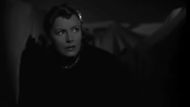
Greta Garbo was 36 when she stood at a crossroad: she had already dominated the silent era, made a conquest over the audience with her memorable roles in such classics as Camille, and had even tested her hand at comedy by appearing in an instant box office smash Ninotchka. Nevertheless, she found herself as the unwitting victim of conflicting studio demands and changing war-time American tastes and pursued one last, fatal project, Two-Faced Woman (1941). To capitalise on this shrinking domestic market, MGM sought to bring Garbo into the contemporary world by casting her once more with Melvyn Douglas in a romantic comedy in which Garbo poses as her own twin sister to regain the interest of her husband.
But behind appearances, everything went awry. Garbo did not appreciate the script and the tone of the movie, and she was extremely uncomfortable with the pool scene; she even ran from her dance instructor, hiding in a tree. Two-Faced Woman was the mythic end of Garbo’s screen life.
Lindsay Lohan in the movie: I Know Who Killed Me
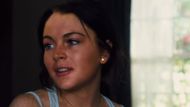
A former teen star and Hollywood ingenue, Lindsay Lohan had a successful box-office run in her youth in movies like The Parent Trap and Mean Girls; then fell off track in the middle of the 2000s. As of 2007, she appeared in the psychological thriller I Know Who Killed Me, a critical and commercial failure. The movie added to the already existing publicity of her personal issues, as this led to an avalanche of negative publicity. Lohan placed herself in the position of a tabloid character rather than in the position of a great actress, and career opportunities disappeared. She tried to come out, but because of being associated with this failed project, it got more difficult to forget the stigma. Though she did come back, the road was not smooth, and the movie, I Know Who Killed Me, has become synonymous with the point at which she hit the skids in her career.
Elizabeth Berkley in the movie: Showgirls
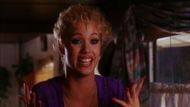
Jumping directly out of her TV teen stardom on Saved by the Bell straight into the harsh light of an NC-17 erotic thriller titled Showgirls, directed by Paul Verhoeven (who also directed Basic Instinct) and written by Joe Eszterhas, Elizabeth Berkley stunned the world in 1995.
On paper, it was a no-brainer version of Hollywood, with a high-profile creative team and a grit-and-glam lead: apparently, it was the opportunity for Berkeley to reinvent her image from sitcom favorite to a serious actress. However, when Showgirls was released, the criticism was swift and severe. Her agency fired her, and publicists who once chased after her started avoiding her on the phone. The short-term harm was immense, but Showgirls was not going to remain resting in peace either. Its lurid atmosphere and exaggerated performance have helped it over time to become a cult classic.
Jaden Smith in the movie: After Earth
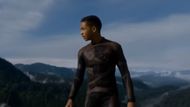
Upon its release in May 2013, After Earth was marketed as a big‑action sci-fi movie starring real-life father-son actor pair Will and Jaden Smith. The film, which was directed by M. Night Shyamalan, had the trappings of a box‑office hit: pedigree, effects, and a built in-audience. But it did not last long. Its slow pace and over-serious style drew criticism, and Jaden was condemned in most quarters as uncharismatic and emotionless. Jaden himself was only 13 when shooting began and 14 at the time of release; critics were merciless on his leading man debut. After Earth effectively derailed the Hollywood career of Jaden Smith. It was a high‑investment blockbuster that flopped both critically and commercially, highlighting Jaden’s shortcomings in the prime of his youth and hardly allowing any subsequent recovery to the larger mainstream.
Geena Davis in the movie: Cutthroat Island

By 1995, Geena Davis was at the top of her Hollywood game: Oscar-winning, versatile and popular. She had spun from Tootsie and The Fly to Thelma & Louise and A League of Their Own, which not only combined charm and power but also nuance. In 1995, she played the swashbuckling role of Morgan Adams in Cutthroat Island, a high-budget pirate film directed by her husband, Renny Harlin. However, which was supposed to launch her into the world of action stars, instead turned into such a disastrous box-office flop that it is often remembered as one of the largest failures in film history, with a final global gross of only about $16 million on a production effort of between 92 and 115 million dollars. The ramifications were enormous: it both bankrupted the film studio Carolco Pictures and all but killed the genre of pirate films until the release of Pirates of the Caribbean which helped revive the genre a decade later.
Mike Myers in the movie: The Love Guru
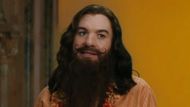
Having created several iconic characters in one career, for instance Wayne Campbell, Shrek, and Austin Powers, Mike Myers became an untouchable celebrity figure to some. However, by the time The Love Guru appeared in theaters in June 2008, its box office collapse was not only a disappointment but this is when Myers finally lost his mojo. The movie earned about 40 million compared to its budget of 62 million dollars. Myers never thereafter assumed a starring role in a live-action film. This led, instead, to a new career in voice (e.g. Shrek sequels), some supporting roles, and a television series (The Pentaverate), none of which achieved his former heights.
The Hinduism and Indian stereotypes presented in the movie, The Love Guru, prompted criticism on a large scale, so the jokes are internally cringeworthy instead of the intended light satire. The failure of the film at the box office, critical flaying, clashes with the culture, and the problem with its own reputation became a watershed in the career of a star that once looked unstoppable.
Sofia Coppola in the movie: The Godfather: Part III
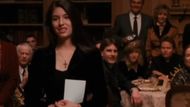
Sofia Coppola, a teenager who had made a very short cameo as a baby in the original Godfather, became the center of attention again in 1990, when Winona Ryder left days before the production started due to exhaustion. She was cast by her father, Francis Ford Coppola, to play the role of Mary Corleone: an unplanned and unready decision, acted upon in the circumstances of the dramatic pressure. Critics criticized that she almost killed the film due to her lack of experience. Admittedly, the ordeal was later recalled with a touching sense of resilience on the part of Sofia herself. She hardened after this experience. She focused on her creativity behind the camera. As it happens, her rocky start was arguably what led to her becoming one of the most acclaimed directors of her generation, winning an Oscar for Lost in Translation, and being respected for her nuanced and layered storytelling.
Love movies? Try our Box Office Game and Movie Grid Game to test your film knowledge and have some fun!
